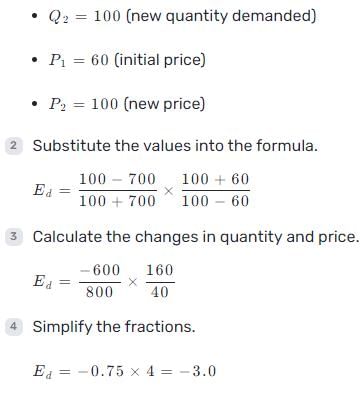Test: Theory Of Demand And Supply- 1 - CA Foundation MCQ
30 Questions MCQ Test Business Economics for CA Foundation - Test: Theory Of Demand And Supply- 1
All but one of the following are assumed to remain the same while drawing an individual’s demand curve for a commodity. Which one is it?
Which of the following pairs of goods is an example of substitutes?
In the case of a straight line demand curve meeting the two axes, the price-elasticity of demand at the mid-point of the line would be :
The Law of Demand, assuming other things to remain constant, establishes the relationship between :
Identify the factor which generally keeps the price-elasticity of demand for a good low :
Identify the coefficient of price-elasticity of demand when the percentage increase in the quantity of a good demanded is smaller than the percentage fall in its price :
In the case of an inferior good, the income elasticity of demand is :
If the demand for a good is inelastic, an increase in its price will cause the total expenditure of the consumers of the good to :
If regardless of changes in its price, the quantity demanded of a good remains unchanged, then the demand curve for the good will be :
The horizontal demand curve parallel to x-axis implies that the elasticity of demand is:
All of the following are determinants of demand except :
A movement along the demand curve for soft drinks is best described as :
If the price of Pepsi decreases relative to the price of Coke and 7-UP, the demand for :
If a good is a luxury, its income elasticity of demand is :
The price of hot dogs increases by 22% and the quantity of hot dogs demanded falls by 25%. This indicates that demand for hot dogs is :
If the quantity demanded of beef increases by 5% when the price of chicken increases by 20%, the cross-price elasticity of demand between beef and chicken is
Given the following four possibilities, which one results in an increase in total consumer expenditures?
The price elasticity of demand for hamburger is
The price elasticity of demand is defined as the responsiveness of :
Suppose the price of movies seen at a theater rises from Rs. 120 per person to Rs. 200 per person. The theater manager observes that the rise in price causes attendance at a given movie to fall from 300 persons to 200 persons. What is the price elasticity of demand for movies? (Use Arc Elasticity Method)
Suppose a department store has a sale on its silverware. If the price of a plate-setting is reduced from Rs. 300 to Rs. 200 and the quantity demanded increases from 3,000 plate settings to 5,000 plate-settings, what is the price elasticity of demand for silverware?
A discount store has a special offer on CDs. It reduces their price from Rs. 150 to Rs. 100.Suppose the store manager observes that the quantity demanded increases from 700 CDs to 1,300 CDs. What is the price elasticity of demand for CDs?
If the local pizzeria raises the price of a medium pizza from Rs. 60 to Rs. 100 and quantity demanded falls from 700 pizzas a night to 100 pizzas a night, the price elasticity of demand for pizzas is :
If electricity demand is inelastic, and electric rates increase, which of the following is likely to occur?
Suppose the demand for meals at a medium-priced restaurant is elastic. If the management of the restaurant is considering raising prices, it can expect a relatively :
Point elasticity is useful for which of the following situations?
A decrease in price will result in an increase in total revenue if :
An increase in price will result in an increase in total revenue if :
|
86 videos|255 docs|58 tests
|





















